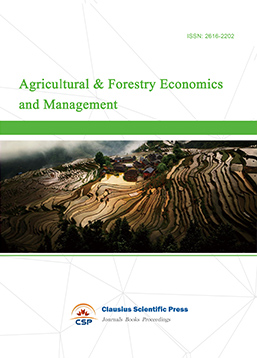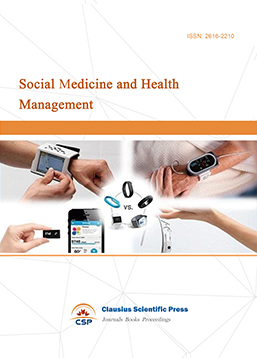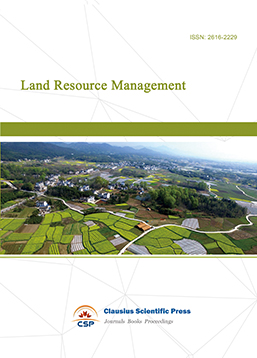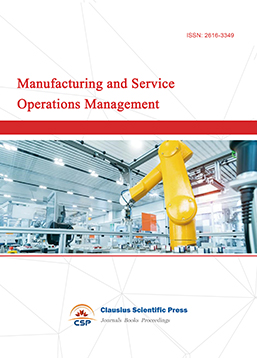Investigation on the Impact of the Development of Digital Economy on the Innovation Efficiency of Chinese Small and Medium-sized Board Listed Enterprises
DOI: 10.23977/ieim.2023.060708 | Downloads: 23 | Views: 1438
Author(s)
Jiani Ying 1, Hangwei Xu 1
Affiliation(s)
1 Zhejiang Business Technology Institute, Ningbo, Zhejiang, 315012, China
Corresponding Author
Jiani YingABSTRACT
With the development of the Digital Economy (abbreviated as DE for convenience), research on the impact of Innovation Efficiency (abbreviated as IE for convenience) on Chinese Small and Medium-sized Board Listed Enterprises (abbreviated as SMBLE for convenience) is constantly improving. The design of IE impact models for Chinese SMBLE based on DEA (Data Envelopment Analysis) is becoming increasingly important. In the entire research on the impact of IE, how to construct key indicators of IE for listed companies is currently a key issue that needs to be urgently addressed. Through the research on DE and Small and Medium-sized Board Enterprises (abbreviated as SMBE for convenience) innovation, as well as the analysis of IE index system of listed enterprises, with the help of the application of DEA and the definition of basic concepts, combined with simulation and questionnaire experiments, the following conclusions were drawn based on the data results: On the basis of the development of the DE, among the six selected factors influencing IE, the enterprise IE after adjusting the development level of the DE had the most significant improvement effect, increasing by 18.2%. The IE improvement effect after the adjustment of technical efficiency and scale efficiency was good, with an increase of 14.7% and 13.8%, respectively. In the questionnaire survey, adjusting the internal governance structure of enterprises could help improve the IE of Small and Medium-sized Enterprises (SME), indicating that the development level of the DE, technological efficiency, scale efficiency, and internal governance structure of enterprises had a certain impact on IE.
KEYWORDS
Digital Economy Development, Small and Medium-sized Board Enterprises, Innovation Efficiency, DEA ModelCITE THIS PAPER
Jiani Ying, Hangwei Xu, Investigation on the Impact of the Development of Digital Economy on the Innovation Efficiency of Chinese Small and Medium-sized Board Listed Enterprises. Industrial Engineering and Innovation Management (2023) Vol. 6: 54-61. DOI: http://dx.doi.org/10.23977/ieim.2023.060708.
REFERENCES
[1] Shoulin L, Rui Z, Lihua C. Evaluation of Innovation Efficiency of Logistics Listed Companies Based on DEA. West Forum on Economy and Management, 2018, 29(4):55-62.
[2] Fang M, Wang J, Han D, et al. Research on Innovation Efficiency of Hubei High-tech Industry Based on DEA and PSM-DID Models. IOP Conference Series Earth and Environmental Science, 2020, 474(7):1-9.
[3] Wang Y M, Xuan J I, Wu H X, et al. Research on Innovation Efficiency Evaluation Based on the Three-Stage DEA Model—A Case Study of Energy-saving Listed Companies. Journal of Technical Economics & Management, 2019, 2019(3):25-30.
[4] GGD A, SMB C, MK D. The Impact of Immigration on Skills, Innovation and Wages: Education Matters more than where People Come from - ScienceDirect. Journal of Policy Modeling, 2020, 42( 3):557-582.
[5] Atta Mills EFE, Zeng K, Fangbiao L, et al. Modeling innovation efficiency, its micro-level drivers, and its impact on stock returns. Chaos, Solitons & Fractals, 2021, 152(01):111303 - 111323.
[6] Alon B, Wei J, Song M, et al. How Does Hedge Fund Activism Reshape Corporate Innovation? Journal of Financial Economics, 2018, 130(2):237-264.
[7] Teece D J. Profiting from innovation in the digital economy: Enabling technologies, standards, and licensing models in the wireless world. Research Policy, 2018, 47(8):1367-1387.
[8] Veselovsky M Y, Pogodina T V, Ilyukhina R V, et al. Financial and economic mechanisms of promoting innovative activity in the context of the digital economy formation. Entrepreneurship & Sustainability Issues, 2018, 5(3):672-681.
[9] Li L, Su F, Zhang W, et al. Digital transformation by SME entrepreneurs: A capability perspective. Information Systems Journal, 2018, 28(6):1129-1157.
[10] Han M N, Wang F S, Lin H. Does analyst tracking promote corporate technology innovation? --A case study of small and medium-sized board companies. Audit and Economic Research, 2021, 36(4):90-97.
[11] Solheim M C W, Herstad S J. The Differentiated Effects of Human Resource Diversity on Corporate Innovation. International Journal of Innovation and Technology Management (IJITM), 2018, 15(5): 1850046. 1-1850046. 25.
[12] Hyun‐Dong Kim, Park K, Song K R. Do long‐term institutional investors foster corporate innovation? Accounting & Finance, 2019, 59(2):1163-1195.
[13] Wen H, Lee C C, Zhou F. How does fiscal policy uncertainty affect corporate innovation investment? Evidence from China’s new energy industry. Energy Economics, 2022, 105(Jan.):1-12.
[14] Wang T. Board human capital diversity and corporate innovation: a longitudinal study. Corporate governance, 2022, 22(4):680-701.
[15] Yang Y, Cui W, He J. An Empirical Analysis of the Correlation between Listed Companies' Financial Shared Services and Corporate Innovation Performance: Based on the Empirical Data of A-Share Listed Companies. Mathematical Problems in Engineering, 2022, 2022(01):1-7.
[16] Luo D, Wu Z, Zhuo J, et al. Market misvaluation and corporate innovation: "Catering" or "risk aversion"? —— Empirical evidence from China capital market. Chinese Journal of Accounting: English Edition, 2022, 1(3):57-77.
[17] Gu J. Spatial Dynamics between Firm Sales and Environmental Responsibility: The Mediating Role of Corporate Innovation. Sustainability, 2021, 13(4):1648-1665.
[18] He F, Miao X, Wong C W Y, et al. Contemporary corporate eco-innovation research: A systematic review. Journal of Cleaner Production, 2018, 174(FEB. 10):502-526.
[19] Lo JTY, Kam C. Innovation Performance Indicators for Architecture, Engineering and Construction Organization. Sustainability, 2021, 13(16):1-25.
[20] Ozkaya G, Timor M, Erdin C. Science, Technology and Innovation Policy Indicators and Comparisons of Countries through a Hybrid Model of Data Mining and MCDM Methods. Sustainability, 2021, 13(2):1-52.
| Downloads: | 27006 |
|---|---|
| Visits: | 812419 |
Sponsors, Associates, and Links
-
Information Systems and Economics

-
Accounting, Auditing and Finance

-
Tourism Management and Technology Economy

-
Journal of Computational and Financial Econometrics

-
Financial Engineering and Risk Management

-
Accounting and Corporate Management

-
Social Security and Administration Management

-
Population, Resources & Environmental Economics

-
Statistics & Quantitative Economics

-
Agricultural & Forestry Economics and Management

-
Social Medicine and Health Management

-
Land Resource Management

-
Information, Library and Archival Science

-
Journal of Human Resource Development

-
Manufacturing and Service Operations Management

-
Operational Research and Cybernetics


 Download as PDF
Download as PDF